The administration of products, warehouses, locations, product variations, and all other product storage and management aspects are included in inventory management. Additionally, tracking management and logistical support are involved. For the best possible product management, warehouse and location management are crucial. Odoo Inventory locations aid in the systematization of places.
A place is indicated by the word location. The location of the warehouse is where we keep our merchandise. However, the location can be virtual or physical in this case. We store real things in physical locations and display losses and damages virtually in virtual locations. The hierarchical management of the locations is made possible by the Odoo Inventory. It enables us to design various areas within the warehouses. Either a real or virtual place can be the location.
To clearly define the hierarchy, each location can have a sub-location. This indicates that Odoo supports Parent Location and Child Location creation. This makes it easier for users to arrange many kid locations below one parent location. Products should be arranged in these kid locations to make managing product movement easier. This makes managing the stock easy as well.
If we are using the app for the first time, we need to adjust some configuration settings to handle the locations and location kinds.
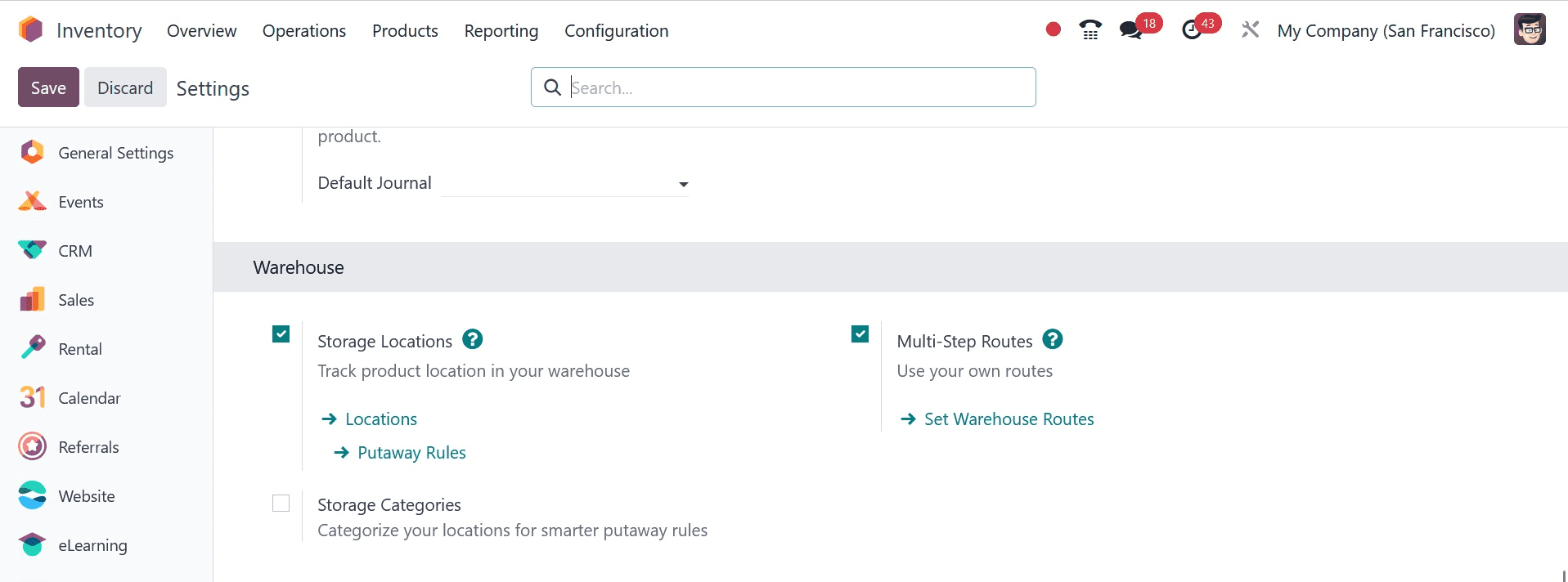
Storage Locations are located here, beneath the Warehouse division. By turning this on, we can also define putaway restrictions. After saving the modifications, we can return to the Configuration menu and select Locations.
There is a list of locations visible when we open Locations. As we can see from the filter Internal, these are the company's internal locations.
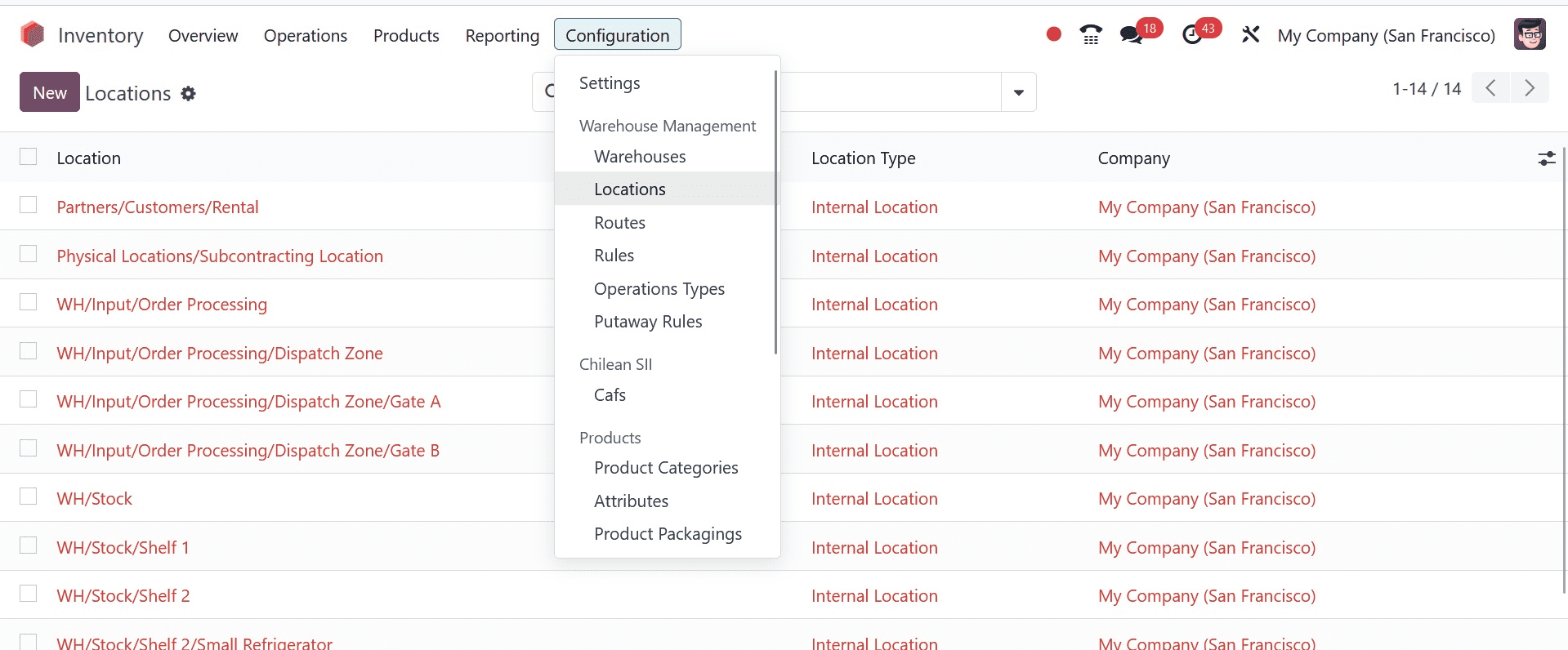
We can remove the filter to view all locations.
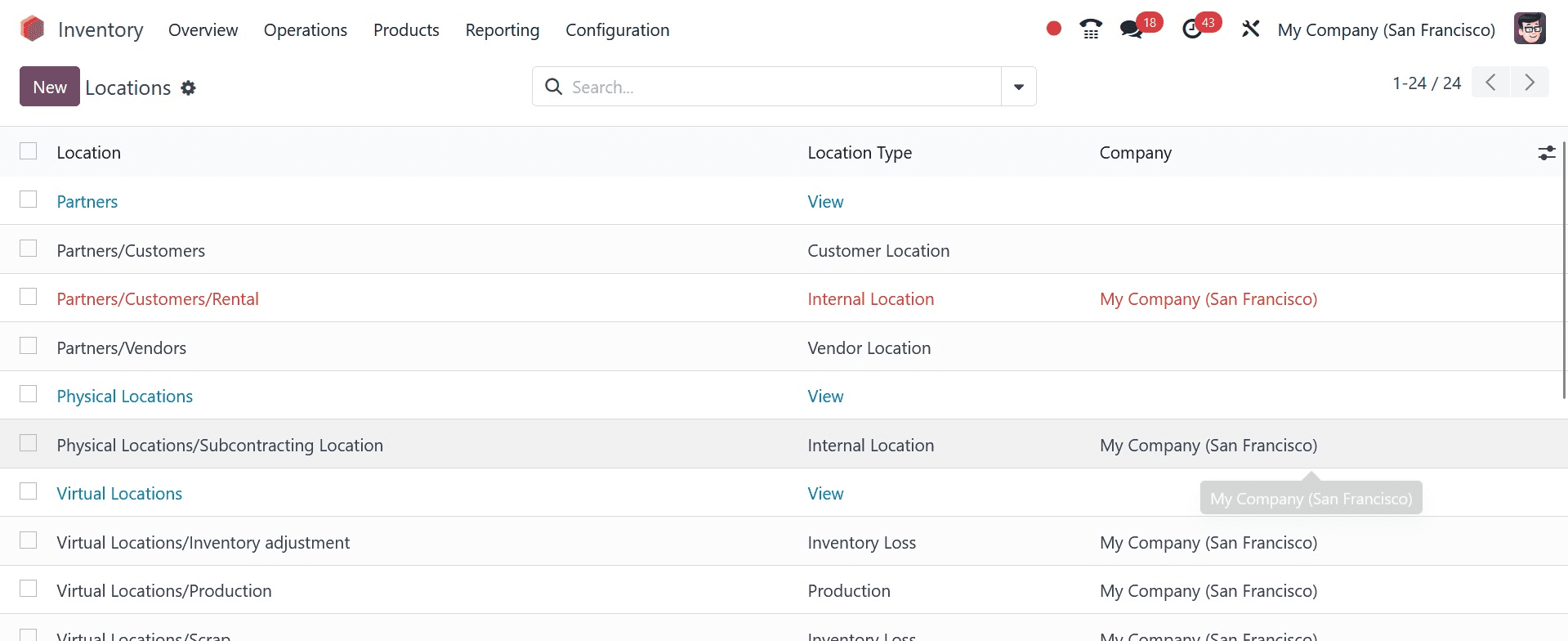
Partner locations, real locations, rental locations, virtual places, etc., can all be found here. Additionally, this is where you may view the internal places named WH (Warehouse).
Three different sorts of locations are often managed in an inventory. Three locations exist partner locations, physical sites, and virtual places.
Physical Location
The internal location includes the physical place. Since the internal locations would be found inside the warehouse, we have assigned an internal location's short name, WH, to stand for Warehouse.
Our internal locations are where we keep our products in our inventory of Odoo. This space is also used for loading products out of the warehouse and unloading supplies into the warehouse.
Partner Location
The partners' location is known as the partner location. A vendor or consumer could be a partner. The customer or vendor would be the owner of these locations, which would be outside your warehouse. Still, these places function in the same manner as our actual locales.
Virtual Location
Besides a physical site, businesses run virtual locations to simulate an actual warehouse. As the name suggests, a virtual location only exists in theory. Products that aren't physically stored in the inventory may be kept here.
This type of warehouse is used to track the product's history or to display how it moves. For instance, a product is taken out of the partner location when shipped from the vendor location. However, until it arrives at our warehouse, it cannot be entered into the actual stock location. The product location will be identified as a virtual location at this point or while it is in transit. Likewise, a product that has been damaged needs to be discarded. We move the product to a virtual place since it cannot be seen in the stock. The virtual location aids in tracking the product's history in each situation.
For this reason, we mark inventory loss and place missing products using virtual locations.
Hierarchy of Location
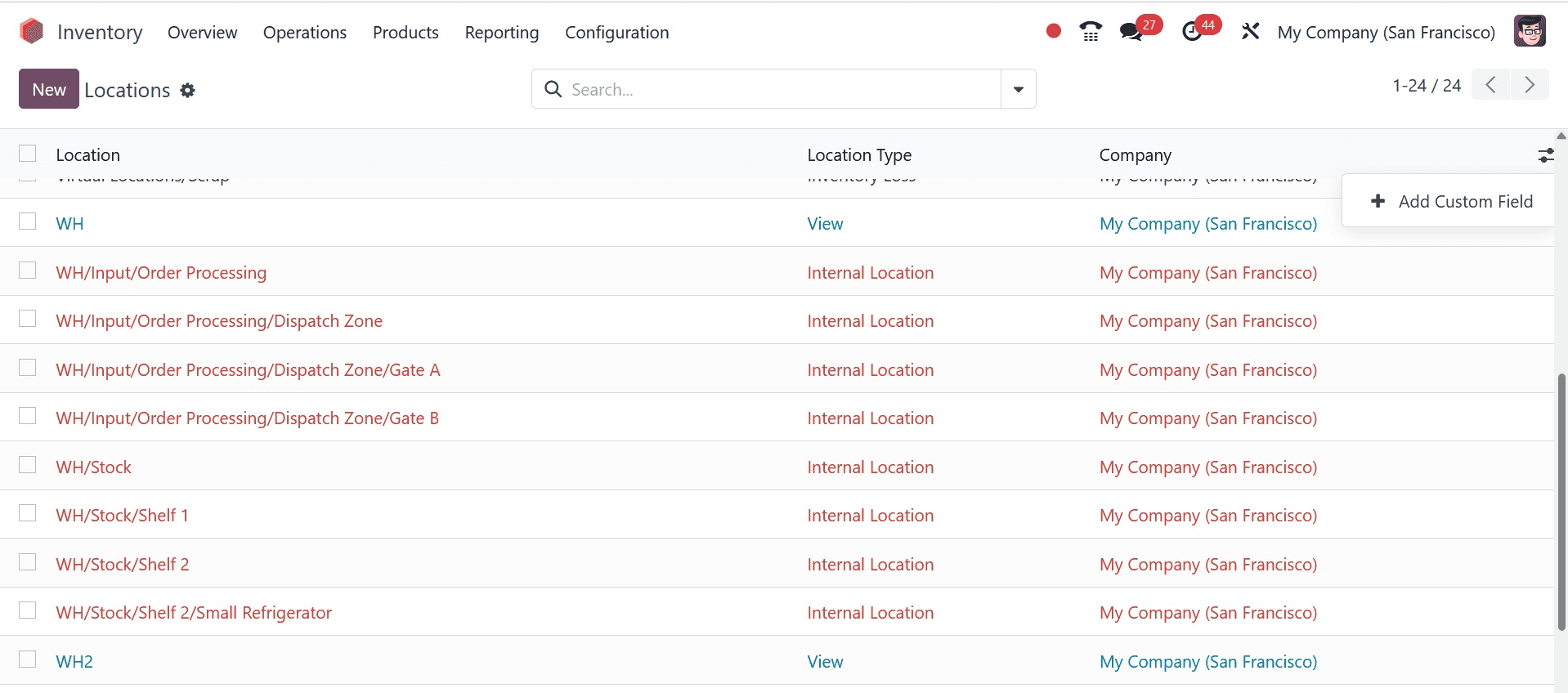
Out of a range of choices, we have chosen this one. These are a few fields.
The location's name is Location Name. The primary, already-existing site is known as the parent location. We describe this as WH/Input since the parent Location, in this case, is Input in WH.
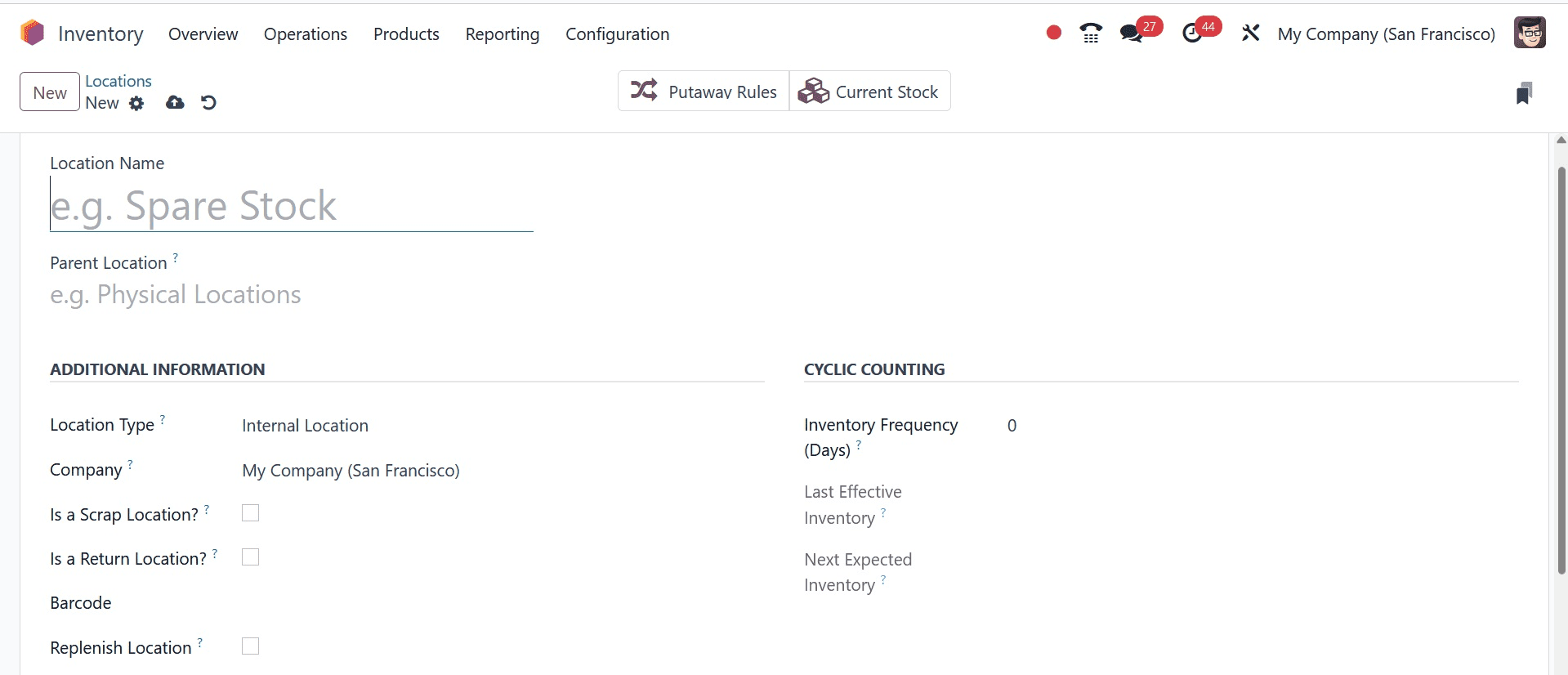
We may locate the form to add a new location on this page. The location name, parent location type, etc., can be added here. We can thoroughly examine these.
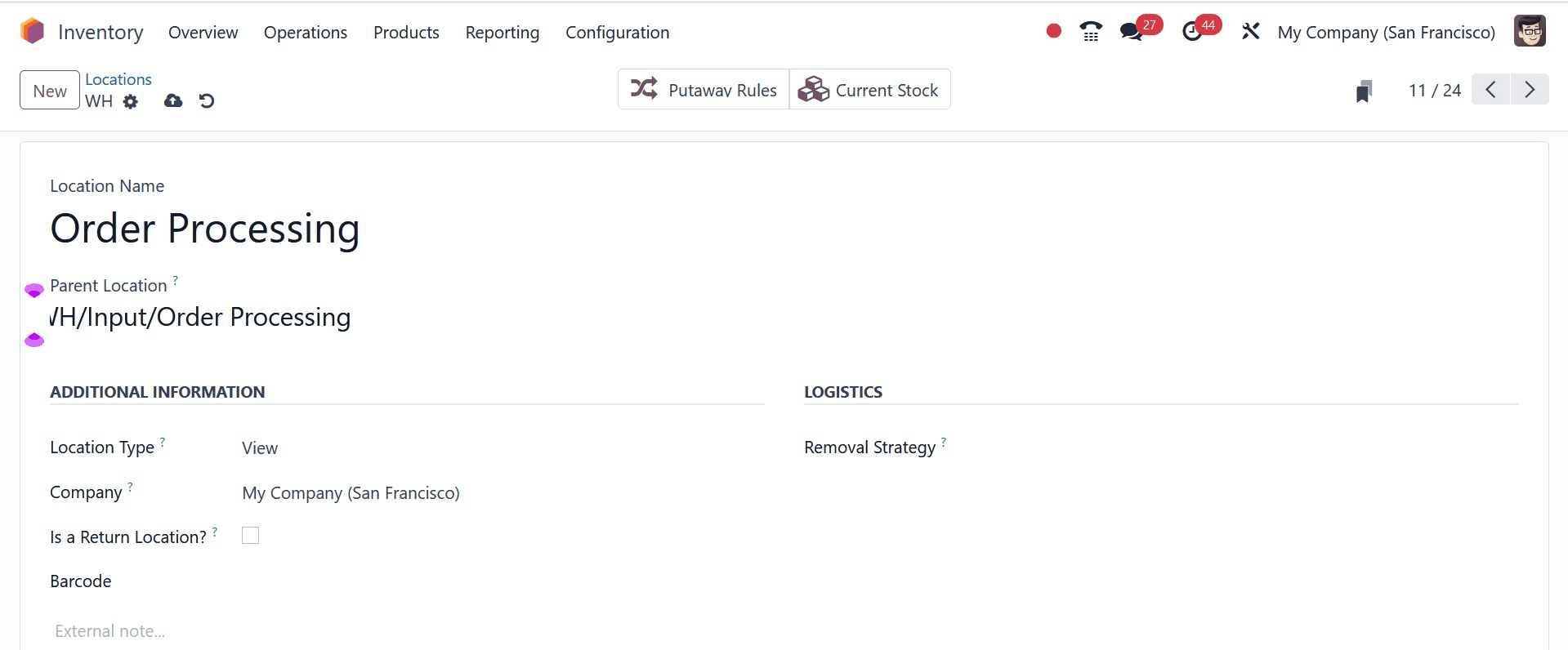
Additional Information
we have the ability to add more information below this tab. They are Types of Locations, as in the image given below.

Various locations can exist, such as internal, vendor, view, internal, customer, inventory loss, production, and transit locations.
The place that symbolizes the source location of the products being brought from the vendors is known as the vendor location or virtual location.
Then, the actual sites within our warehouses are known as internal locations.
Customer location: The virtual place that will represent the customer's position or the product's destination can be referred to as customer location.
Inventory Loss: To simulate inventory loss, we employ virtual locations. Utilize this to help you maintain proper stock levels.
View: The locations' hierarchical structure is managed by virtual locations. Products cannot be directly stored in it.
Production: We can manage production-related processes with the aid of this virtual place or virtual counterpart location. This is where the materials are used to generate the final goods.
Transit Location: To provide seamless management of inter-warehouse and inter-company operations, counterpart sites must be utilized.
Company: The company's data must also be provided.
Is it a location for scrap? It can be enabled if the space is utilized to add or store damaged goods or scrap materials.
Is the Place of Return? It can be enabled if the place is used to keep the merchandise that customers return.
Barcode: One important feature that makes it easier to trace the merchandise is barcode management.
Logistics
Under the logistics, you can choose a removal strategy. In the Odoo Inventory, three distinct removal techniques are available.
1. Initial Entry First Exit
2. After First Out, Late
3. First out, first expiry
The sequence in which the products must be removed from the warehouse is determined by utilizing each removal procedure.
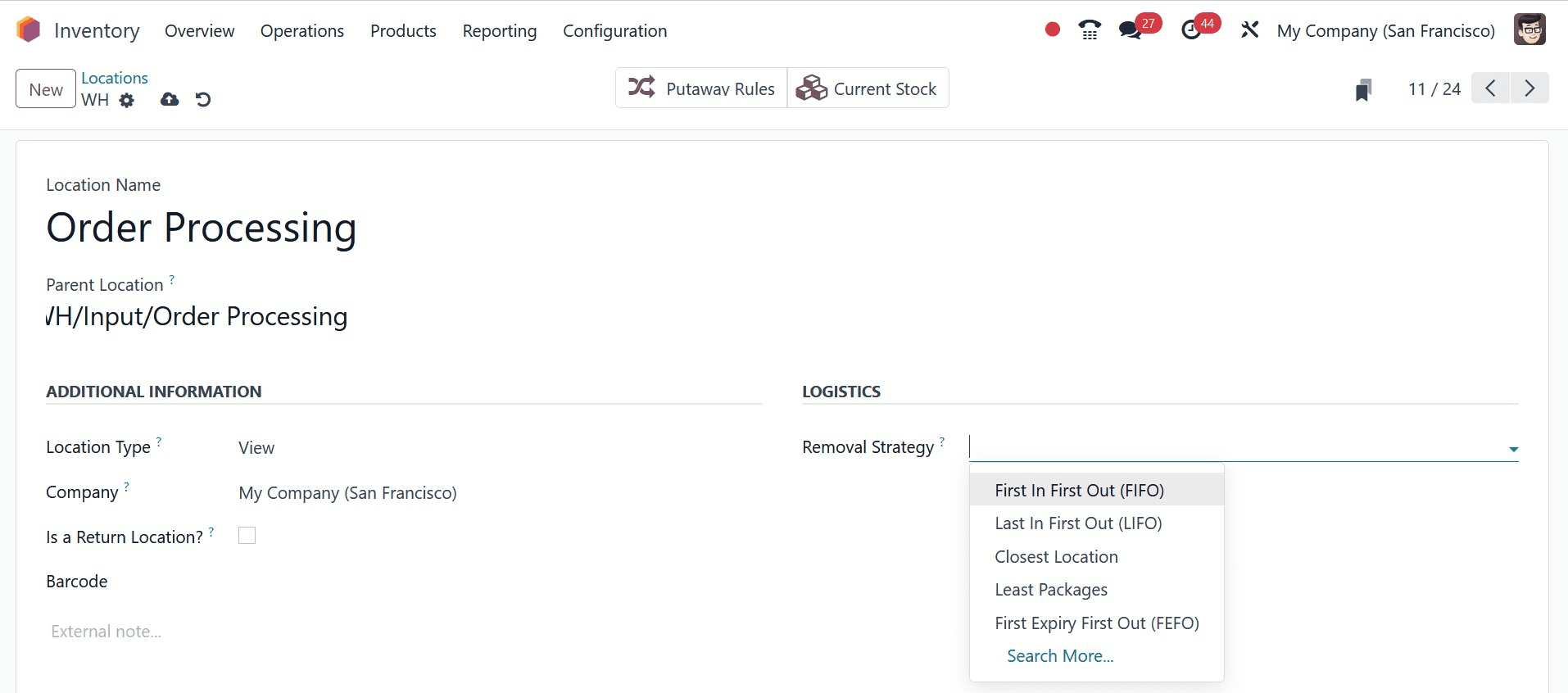
Once the adjustments have been saved, the new location is prepared. In the same approach, we can generate an infinite number of locations. This method can also be used to make rows or shelves for the organization and administration of the aid of the location in the methodical management of all corporate processes. We are also able to locate them. If you want to know more about location types in Odoo Inventory refer to our previous blogs.